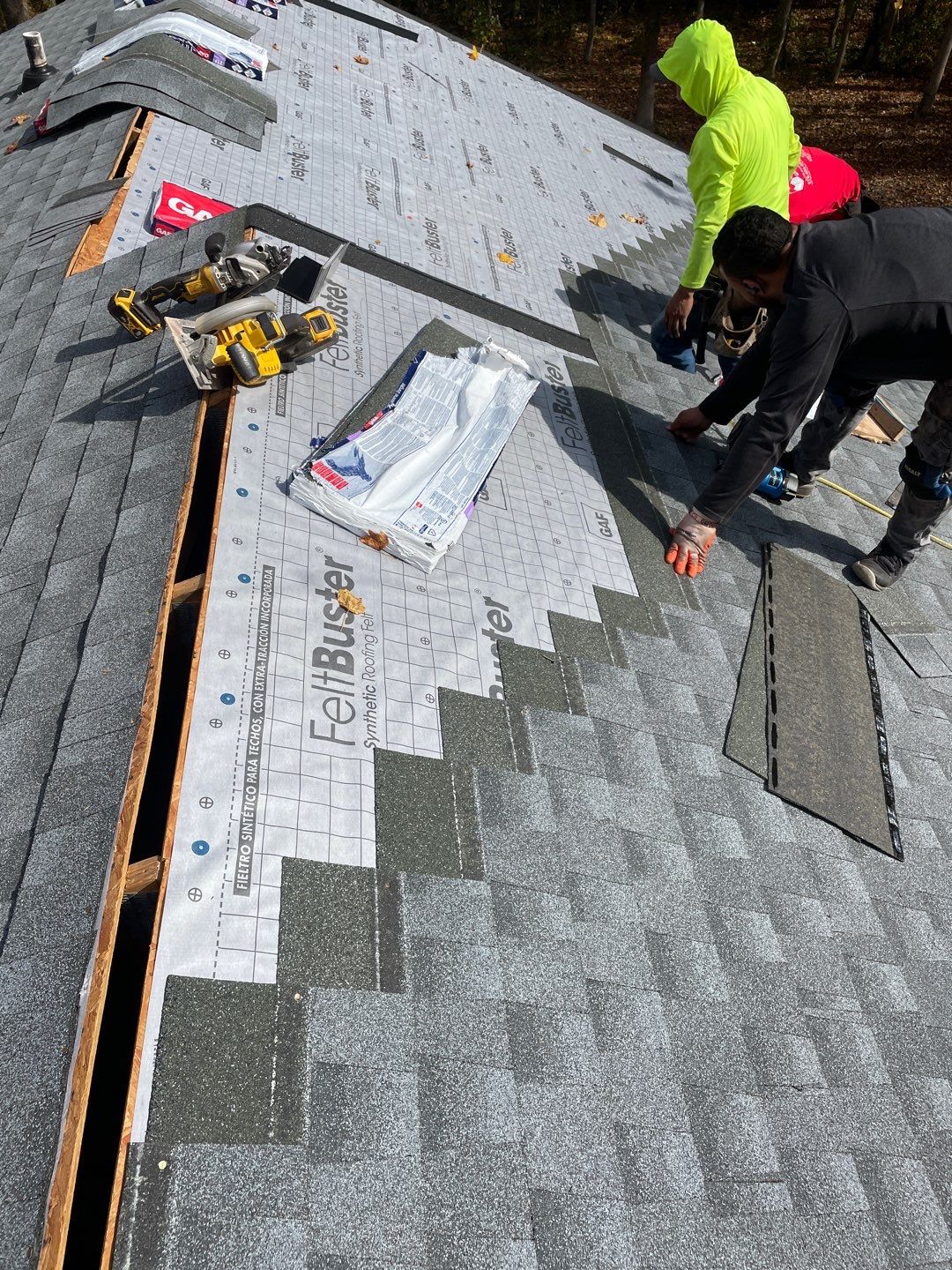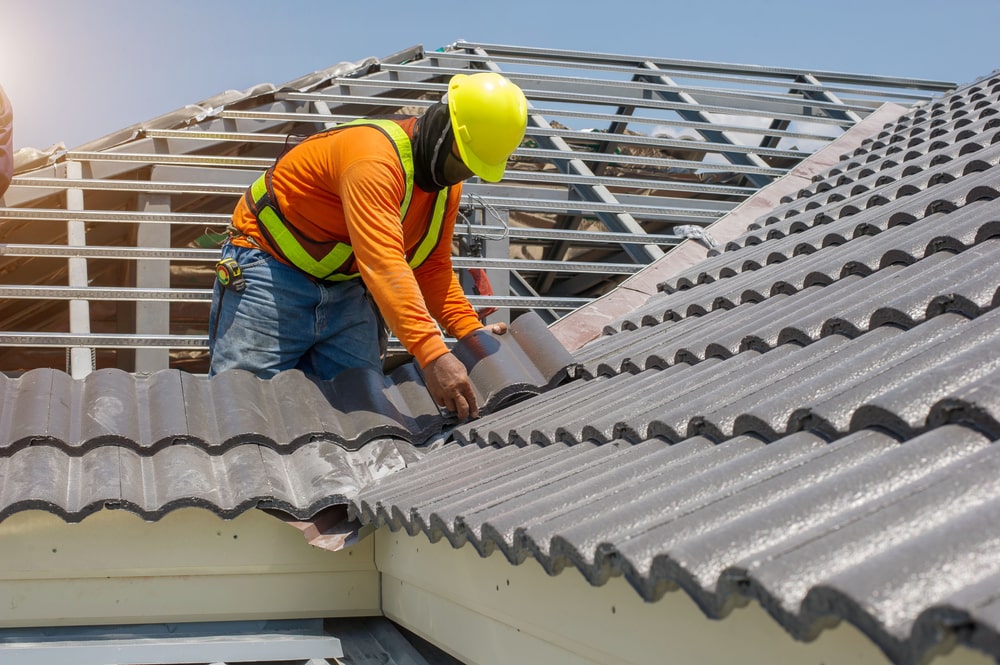Customer Reviews on the most effective Gainesville FL Roofing Companies Offered
Customer Reviews on the most effective Gainesville FL Roofing Companies Offered
Blog Article
Best Practices for Ensuring Correct Roof Ventilation
Guaranteeing correct roof covering ventilation is important for the long life and effectiveness of a roof. A balanced intake and exhaust vent proportion, commonly 1:300, plays a crucial function, with intake vents ideally put at the lower side of the roof covering for great air access and exhaust vents at the top for warm air departure. Normal examinations to recognize clogs and maintain clear air flow are paramount. Keeping insulation away from vents is important to stop air flow limitation. Understanding these fundamental components establishes the stage for more comprehensive understandings right into installment and maintenance methods that can substantially enhance your roof's performance.
Understand Air Flow Basics
Effectively recognizing air flow basics is vital for making sure the long life and performance of roof systems. Efficient ventilation alleviates wetness buildup and temperature level extremes in the attic, both of which can cause significant architectural damages with time. A well-ventilated roofing aids in stopping typical concerns such as mold growth, wood rot, and ice dams, which can endanger the integrity of the roof materials and the underlying structures.
The primary goal of air flow is to help with the motion of air, enabling a constant exchange in between the interior and exterior atmospheres. This equilibrium is attained with a combination of intake and exhaust vents that interact to maintain ideal airflow. Intake vents, typically situated along the eaves or soffits, allow fresh air to go into the attic room area, while exhaust vents, often situated at or near the roofing system ridge, allow warm, moist air to leave.
Key aspects influencing the efficiency of roof ventilation consist of proper placement, sufficient sizing, and ensuring that both consumption and exhaust vents are unobstructed. Normal inspection and upkeep are critical to recognize potential blockages, damage, or inadequacies in the air flow system, therefore securing the roof's performance and toughness.
Kinds of Roofing System Vents
Roofing vents play an essential role in preserving effective attic room air flow and, by expansion, the overall wellness of the roof system. Different kinds of roofing system vents are available, each with one-of-a-kind advantages tailored to particular roof requirements. Ridge vents, for instance, are installed along the roofing's height, permitting cozy, moist air to leave from the attic room. They use constant air flow and blend flawlessly with the roofline, making them both reliable and cosmetically pleasing.

Soffit vents are installed under the eaves and operate in tandem with roofing vents to guarantee a balanced intake and exhaust system. By allowing cooler air to go into from below, soffit vents facilitate the expulsion of hot air with top vents. Gable vents, situated on the outside walls of the attic, offer another efficient solution, specifically in homes with saddleback roofs.
Analyze Your Current Air Flow

Next, take into consideration the age and problem of your roof covering products and air flow parts. Older systems may not abide by present building codes or might have deteriorated over time, lowering their effectiveness. Conduct a detailed exam to determine any indications of deterioration, such as corrosion, damage, or spaces that could compromise the system's performance.
In addition, gauge the attic temperature level and moisture levels. High temperatures and humidity can show inadequate air flow - gainesville roofing companies. Use a hygrometer and thermostat to get accurate readings, comparing them with outside problems. Persistent disparities recommend possible problems that need dealing with.
Setup Best Practices
Effective setup of roof covering air flow systems is paramount for ensuring optimum efficiency and long life. Appropriate installment starts with recognizing the particular ventilation demands of the building and the roofing it covers. This includes computing the correct proportion of intake to wear down vents, normally adhering to the 1:300 regulation, which specifies one square foot of ventilation for each 300 square feet of attic room flooring space.

Consumption vents ought to be set up at the roof's lower edge, usually in the soffits, to enable awesome air to get in. Exhaust vents, on the other hand, should be installed near or at the roofing system's top to facilitate the leave of cozy, damp air.
Seal all vent connections carefully to stop air leakages and possible water infiltration. Usage high-quality materials and comply with supplier guidelines to make sure resilience and efficiency. In addition, integrating ridge vents with baffles can significantly boost air movement performance by stopping wind-driven rainfall and snow from getting in the attic room.
Eventually, specific installation of roof air flow systems minimizes prospective problems such as mold and mildew growth, ice dams, and structural damage, ensuring the roofing system's integrity and the structure's general health and wellness.
Regular Upkeep Tips
Uniformity in upkeep practices is essential to guaranteeing the long-term effectiveness of roofing ventilation systems. Throughout these assessments, ensure that vents are free of particles, nests, and various other obstructions that might impede air flow.
Cleaning the vents is an additional important job. Utilize a soft brush or a vacuum to eliminate dirt and debris from intake and exhaust vents. see this site Be careful not to damage the vent screens or louvers during the process. Furthermore, examine the attic room for any kind of signs of water damages, which might endanger the stability of the roof.
Appropriate insulation is equally important. Guarantee that attic insulation does not block the vents, as this can badly limit air movement. If any kind of insulation has actually moved or cleared up, reposition or replace it to keep an efficient barrier.
Lastly, change any type of harmed or missing out on parts immediately. Busted vents, cracked roof shingles, or shabby blinking can all add to poor ventilation and must be attended to right away. Normal upkeep ensures that the roofing air flow system operates efficiently, therefore extending the lifespan of the roofing system itself.
Verdict
Making sure appropriate roof covering air flow is click here to find out more paramount for preserving the efficiency and durability of a roof system. Adherence to the 1:300 consumption and exhaust vent proportion, combined with the strategic positioning of vents, is crucial.
A balanced intake and exhaust air vent proportion, typically 1:300, plays a crucial function, with consumption vents ideally put at the lower edge of the roof covering for trendy air entry and exhaust vents at the optimal for warm air departure. Consumption vents, typically situated along the soffits or eaves, enable fresh air to go into the attic room space, while exhaust vents, usually positioned at or near the roof ridge, make it possible for hot, damp air to escape.
Soffit vents are set up under the eaves and work in tandem with roof covering vents to guarantee a balanced consumption and exhaust system. By permitting cooler air to go into from below, soffit vents facilitate the expulsion of warm air with top vents. Adherence to the 1:300 intake and exhaust vent ratio, coupled with the strategic placement of vents, is necessary.
Report this page